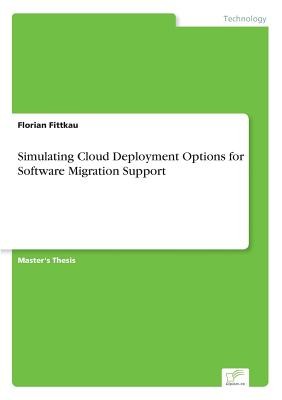
- We will send in 10–14 business days.
- Author: Florian Fittkau
- Publisher: Diplom.de
- Year: 2014
- Pages: 156
- ISBN-10: 3956366964
- ISBN-13: 9783956366963
- Format: 14.8 x 21 x 0.9 cm, minkšti viršeliai
- Language: English
- SAVE -10% with code: EXTRA
Simulating Cloud Deployment Options for Software Migration Support (e-book) (used book) | bookbook.eu
Reviews
Description
Cloud computing is emerging as a promising new paradigm that aims at delivering computing resources and services on demand. To cope with the frequently found over- and under-provisioning of resources in conventional data centers, cloud computing technologies enable to rapidly scale up and down according to varying workload patterns. However, most software systems are not built for utilizing this so called elasticity and therefore must be adapted during the migration process into the cloud. A challenge during migration is the high number of different possibilities for the deployment to cloud computing resources. For example, there exist a plethora of potential cloud provider candidates. Here, the selection of a specific cloud provider is the most obvious and basic cloud deployment option. Furthermore, the mapping between services and virtual machine instances must be considered when migrating to the cloud and the specific adaptation strategies, like allocating a new virtual machine instance if the CPU utilization is above a given threshold, have to be chosen and configured. The set of combinations of the given choices form a huge design space which is infeasible to test manually. Simulating the different deployment options assists to find the best ratio between high performance and low costs. For this purpose, we developed a simulation tool named CDOSim that can simulate those cloud deployment options. CDOSim integrates into the cloud migration framework CloudMIG Xpress and utilizes KDM models that were extracted by a reverse engineering process. Furthermore, it is possible to use monitored workload profiles as a simulation input. Our evaluation shows that CDOSim's simulation results can support software engineers to sufficiently accurate predict the cost and performance properties of software systems when deployed to private and real world public cloud environments such as Eucalyptus and Amazon EC2, respectively. Thus, CDOSim can be used for the simulation of cloud
EXTRA 10 % discount with code: EXTRA
The promotion ends in 21d.17:24:29
The discount code is valid when purchasing from 10 €. Discounts do not stack.
- Author: Florian Fittkau
- Publisher: Diplom.de
- Year: 2014
- Pages: 156
- ISBN-10: 3956366964
- ISBN-13: 9783956366963
- Format: 14.8 x 21 x 0.9 cm, minkšti viršeliai
- Language: English English
Cloud computing is emerging as a promising new paradigm that aims at delivering computing resources and services on demand. To cope with the frequently found over- and under-provisioning of resources in conventional data centers, cloud computing technologies enable to rapidly scale up and down according to varying workload patterns. However, most software systems are not built for utilizing this so called elasticity and therefore must be adapted during the migration process into the cloud. A challenge during migration is the high number of different possibilities for the deployment to cloud computing resources. For example, there exist a plethora of potential cloud provider candidates. Here, the selection of a specific cloud provider is the most obvious and basic cloud deployment option. Furthermore, the mapping between services and virtual machine instances must be considered when migrating to the cloud and the specific adaptation strategies, like allocating a new virtual machine instance if the CPU utilization is above a given threshold, have to be chosen and configured. The set of combinations of the given choices form a huge design space which is infeasible to test manually. Simulating the different deployment options assists to find the best ratio between high performance and low costs. For this purpose, we developed a simulation tool named CDOSim that can simulate those cloud deployment options. CDOSim integrates into the cloud migration framework CloudMIG Xpress and utilizes KDM models that were extracted by a reverse engineering process. Furthermore, it is possible to use monitored workload profiles as a simulation input. Our evaluation shows that CDOSim's simulation results can support software engineers to sufficiently accurate predict the cost and performance properties of software systems when deployed to private and real world public cloud environments such as Eucalyptus and Amazon EC2, respectively. Thus, CDOSim can be used for the simulation of cloud


Reviews